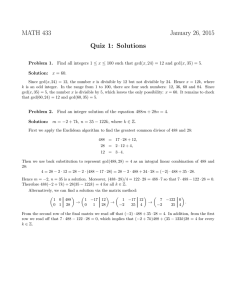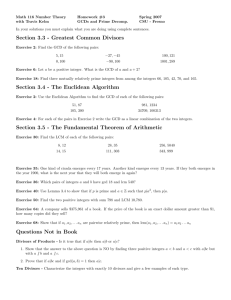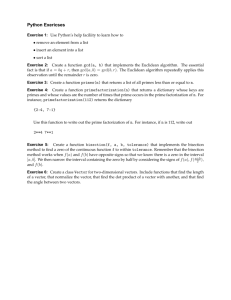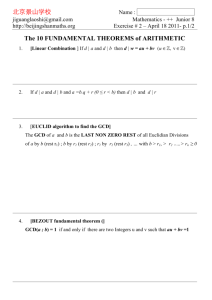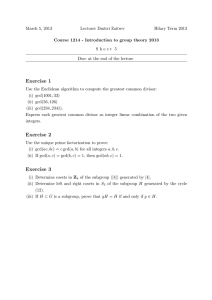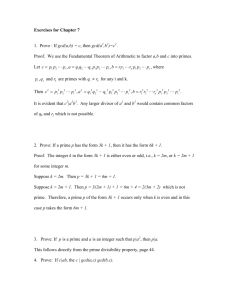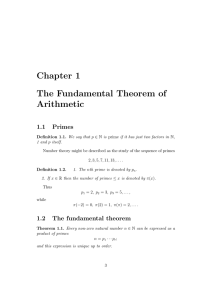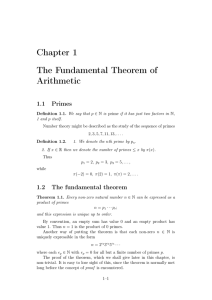MA2317: Introduction to Number Theory Homework problems due October 15, 2010
advertisement
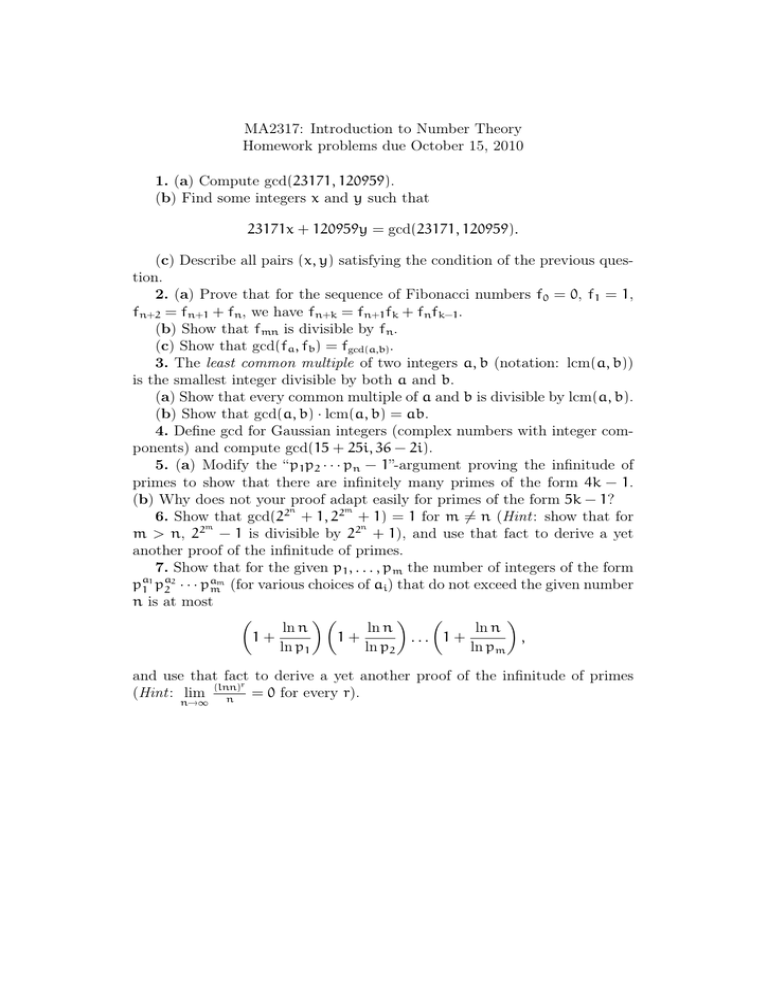
MA2317: Introduction to Number Theory Homework problems due October 15, 2010 1. (a) Compute gcd(23171, 120959). (b) Find some integers x and y such that 23171x + 120959y = gcd(23171, 120959). (c) Describe all pairs (x, y) satisfying the condition of the previous question. 2. (a) Prove that for the sequence of Fibonacci numbers f0 = 0, f1 = 1, fn+2 = fn+1 + fn , we have fn+k = fn+1 fk + fn fk−1 . (b) Show that fmn is divisible by fn . (c) Show that gcd(fa , fb ) = fgcd(a,b) . 3. The least common multiple of two integers a, b (notation: lcm(a, b)) is the smallest integer divisible by both a and b. (a) Show that every common multiple of a and b is divisible by lcm(a, b). (b) Show that gcd(a, b) · lcm(a, b) = ab. 4. Define gcd for Gaussian integers (complex numbers with integer components) and compute gcd(15 + 25i, 36 − 2i). 5. (a) Modify the “p1 p2 · · · pn − 1”-argument proving the infinitude of primes to show that there are infinitely many primes of the form 4k − 1. (b) Why does not your proof adapt easily for primes of the form 5k − 1? n m 6. Show that gcd(22 + 1, 22 + 1) = 1 for m 6= n (Hint: show that for m n m > n, 22 − 1 is divisible by 22 + 1), and use that fact to derive a yet another proof of the infinitude of primes. 7. Show that for the given p1 , . . . , pm the number of integers of the form pa1 1 pa2 2 · · · pamm (for various choices of ai ) that do not exceed the given number n is at most ln n ln n ln n 1+ ... 1 + , 1+ ln p1 ln p2 ln pm and use that fact to derive a yet another proof of the infinitude of primes r = 0 for every r). (Hint: lim (lnn) n n→∞


